|
|
White Temple Chiangmai ?Wat Aranyawat? (Wat Ban
Pong)
Wat Aranyawat (Wat Ban Pong) Loha Prasat Thippayawimankham of Lanna
city
Aranyawas Temple or Ban Pong Temple is a temple called after the
name of the village, which is Ban Pong . The word Pong in the
northern language means At the riverbank or in a swampy area The Ban
Pong temple is located in a flat area at the foot of a mountain.
Surrounded by mountains And there is the Tha Chang River flowing through
the area in front of the temple. Make this area look like a basin. or
stuck in the area around the water s edge Often contains mineral salts
that animals come to eat. This is consistent with the local legend of Kwang Kham where a northern lord chased a golden deer passing this way
on horseback. Then there must be stops along the way at various points
in each village that Kwang Kham passes up to Samoeng District. When
passing this area of Ban Pong, they will stop for a break. Therefore,
it is the origin of the name of the village. Ban Pong Yang Ma (Yang =
park, rest) is a place to rest horses. Suspension of past travel
It is assumed that Wat Ban Pong was built during the reign of
Phrakhruba Jinna. Around the year 1843, it was a temple under the Maha
Nikaya Sangha.
During the reign of King Rama V, the Central Sangha Organization Led by
Somdet Phra Maha Samanachao Krom Phraya Wajirayanawarorot There has been
a movement to improve it. ?Government of the Sangha throughout the
country to be consistent with the government. The name Ban Pong Temple appears, depending on the category of the temple of Nong Khwai Temple.
Depends on Ban Pong region Based on Chiang Mai Chiang Mai Sect Same as
Wat Ban Kwen (Ton Kwen Temple today) in the current Hang Dong District.
For this reason, the name of the temple has been changed from Wat Ban
Pong to Wat Aranyawat since the time it received the Royal
Wisungkhamsima in 1955. The administrative administration department
probably saw that the temple area Next to him and in the forest
Therefore, the temple was named Aranyawat as the official name, which
means temple in the forest, which is consistent with the geography
according to the understanding of the central language.
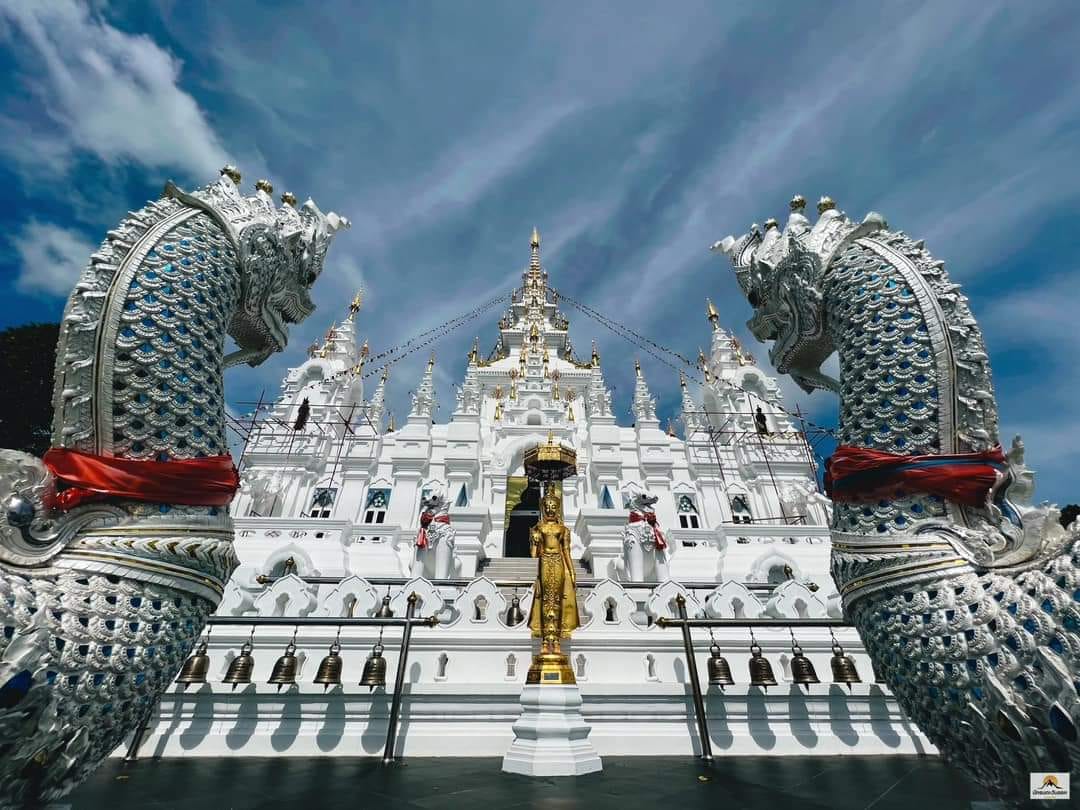
Ban Pong Temple is considered another important temple in terms of
history, society, and politics of the Lanna Kingdom. Especially in the
transitional era where political, administrative and cultural roles are
centralized. and from Burma are competing in the northern region. There
was a comparative analysis study from important pieces of evidence from
the community, namely the original mural paintings in the temple of Ban
Pong Temple from 1987 1988 by Prof. M.L. Surasawat Suksawat, a
full-time lecturer. Faculty of Fine Arts Chiang Mai University Let us
know that Ban Pong Temple is another temple that has valuable Buddhist
art. both in architecture and murals Even though it is only a small
temple in the countryside. But the Buddhist art that was created It
indicates the faith in Buddhism of the people of that era very well.
Because the murals in the temple used indigo (blue) contrasting with
black to paint most of the images. In those days, indigo was an
expensive color. Must be imported from China Therefore, it can be
assumed that Wat Ban Pong should have barons both in the community and
Burmese and Chinese merchant barons. People who believed in Buddhism
traveled to trade in this area and supported the construction of
temples. Because villagers alone in the community would not have been
able to build a temple of this size.
However, it is very unfortunate that The old temple has been torn down.
A new temple has already been built in its place. As a result, important
pieces of historical evidence of this nation have been lost and their
value cannot be regained again.
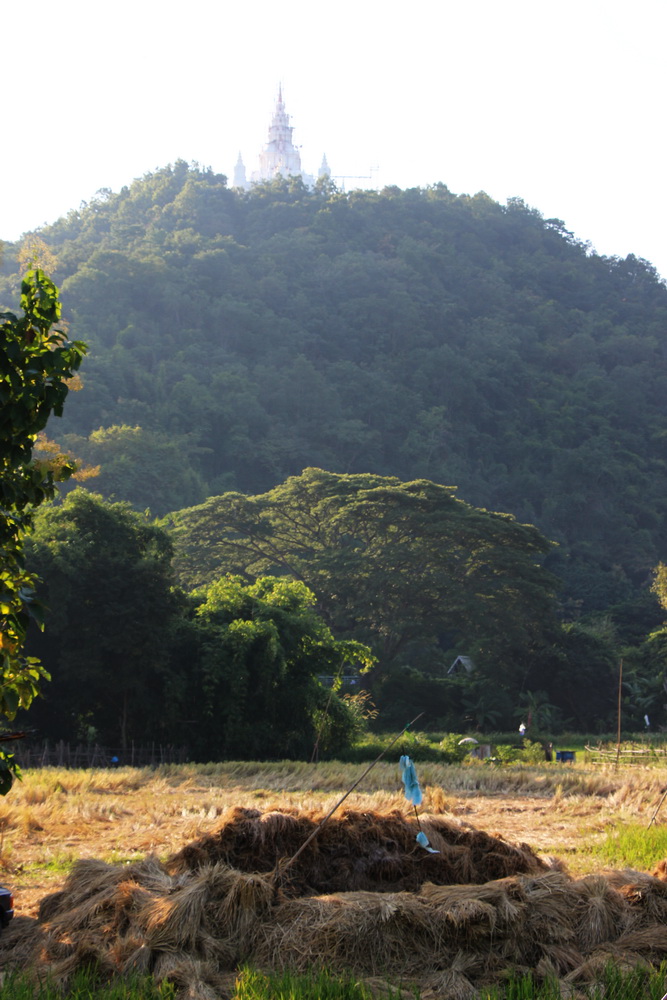
Inside Wat Ban Pong, there are many interesting things. But the most
outstanding thing that can be seen from far away is Phra That Chedi Si
Mueang Pong. Loha Prasat Thippayawimankham of Lanna Located on the top
of a mountain behind the temple by Phra That Chedi Si Muang Pong, there
was no evidence of when it was originally built. Who built it and what
kind of shape was it used in construction
In the past, this area was just a mountain peak with a large amount of
bricks deposited. Until the villagers affectionately called it Pok Din
Ki (or Noen It), which is still a question that cannot be answered. Who
left it here And for what purpose By hearsay It tells of a
phenomenon where there are lights floating from various directions. Then
gathered together near the pile of bricks. with a big tree in the middle
Then a cloud of light rose and fell. until there was bright light all
around You can see every branch of the tree from a distance. People who
had the opportunity to witness this phenomenon They all knew by
agreement and understood that Its a phenomenon. Phra That Sadet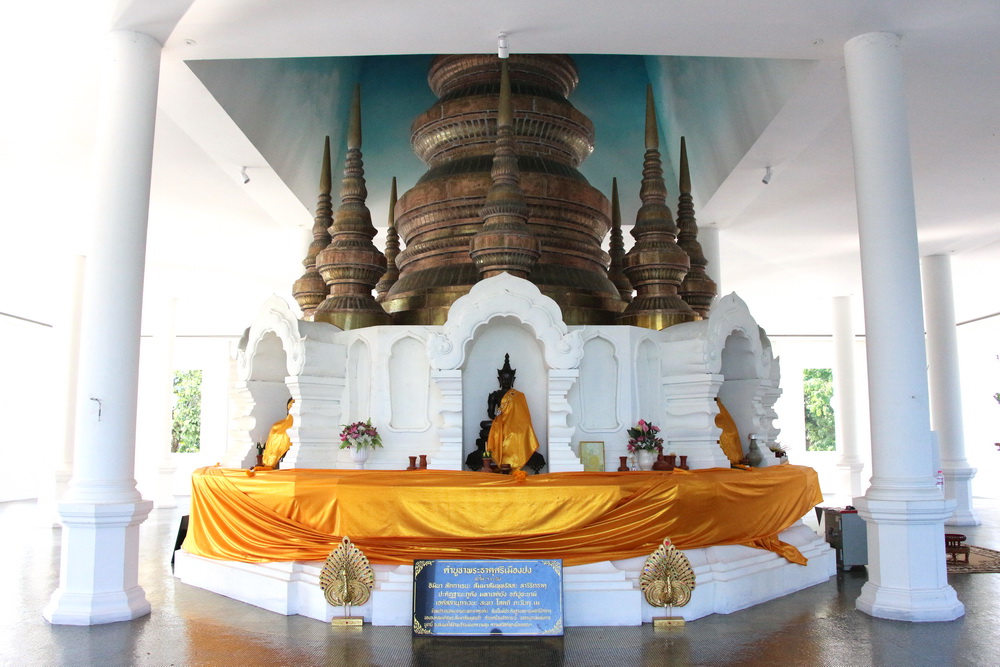
Later, Phra Maha Duangchan Chantachoto (Achan Duangchan Khodkaew), the
abbot of that time, had a project to build a pagoda containing the
Buddhas relics in the temple area. To give faith to the people to have
the opportunity to pay homage and worship With Father Kru Prasit Insat,
a baron who believed in Buddhism. Pawanna will preside over the
construction. Originally, the plan was to dig a hole to build a pagoda
in the northern area of the temple. But the next day it turned out
that the building of the pagoda had to be replaced. For reasons that are
not due to coincidence But it is Dhamma allocated according to the
principle of Itappapaccayatā. (Because this has happened before, this
will happen again.) From the words of a young novice who suddenly spoke
truthfully to the previous abbot, Tupee, if we can get Phra That on Doi
Pok Din Ki, it would be great.
Such words This made the Master stop and think for a moment. Then he
said, I want to build one too. The story of faith has been passed down
continuously. There will be a relic released on the day of the month of
Peng, which was a young novice at that time. Currently, he is Phrakhru
Achawapreecha. Current Abbot This became the starting point for building
Phra That Chedi on top of a mountain in an area where a large number of
Mon bricks had been deposited. which can be considered as the
restoration from ruins to ?Phra That Chedi Ong Mai can be said
The construction of Phra That Chedi in this area makes it visible from
below or even from a distance.
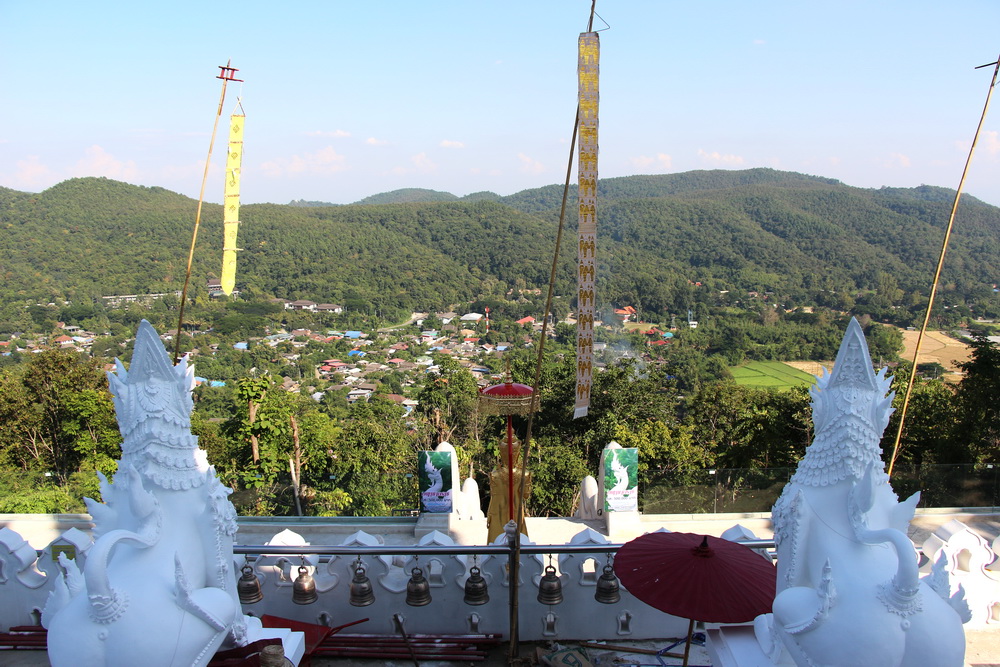
Currently, Phra That Chedi Si Mueang Pong A ?loha castle was built to
cover the original pagoda. In order to preserve and restore the ancient
sites to remain with the community. Also, to offer it as a royal merit
to His Majesty King Rama IX.
Loha Prasat is the original name of India. It has been called since
the time of the Buddha. Somdej Krom Phraya Damrong Rajanubhab gave the
meaning: Buildings with metal tops are ancient monuments that exist
only in three places in the world. The first loha castle? was built in
India during the Buddha?s time and is called Mikaramatu Prasat. It is in
Wat Buppharam, Muang Saket, on the east side of Savatthi. By Mrs.
Visakha Maha Upasikaputri Thananchai The Nawab of Savatthi built it for
the Lord Buddha. From the auction of their jewelry called
?Mahaladaprasadhan obtained the money and used it to build a place for
monks to practice Dhamma. It looks like a large castle with 2 floors and
1,000 rooms. The top of the castle is made of gold. Today, this castle
is in ruins with only the foundation remaining.
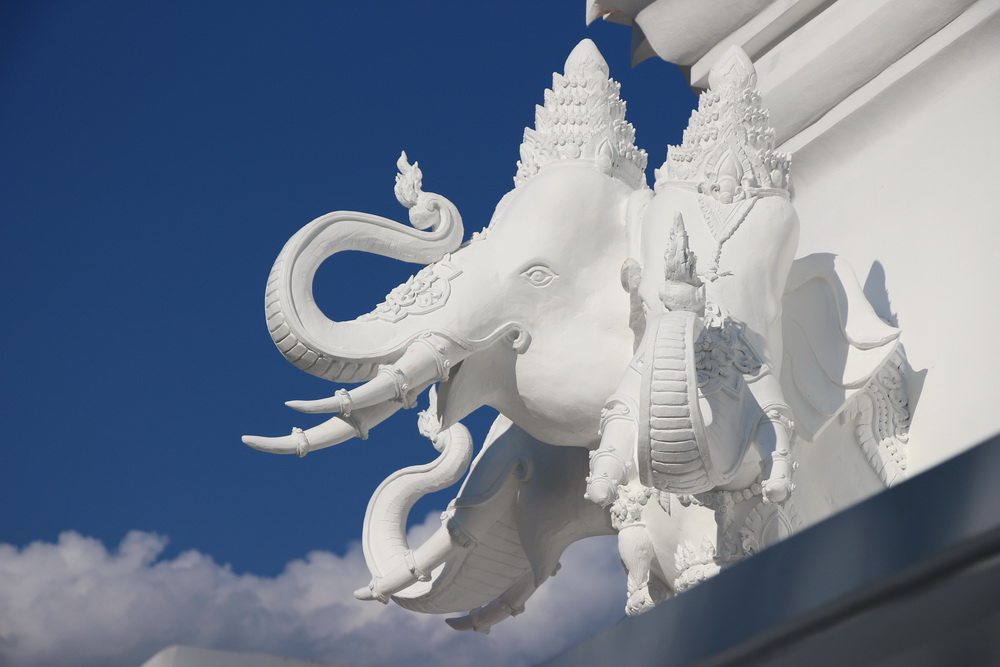
The second metal castle is enshrined in the city of Anuradhapura. Sri
Lanka today Built by King Dutthakamani Abhaya. King of Anuradhapura
around 382 B.E. according to the prophecy in the land of Suphannabat
that Phra Mahinda Thera met. His Majesty ordered it to be built
according to the design of Thipayawiman that His Majesty had seen. It
has wide sides and tall sides. The roof is covered with copper sheets.
The walls are decorated with precious stones and ivory. Monks lived on
each floor according to their knowledge, with those of high rank living
on the upper floor. Then it descends in order. Because the roof is lined
with copper sheets. When the lightning struck, there was a fire that
caused damage many times. Lord Satthatissa Therefore, he ordered a new
one to be only 7 stories high. This castle was later destroyed by
thieves. Currently, there are still ruins of the castle remaining. It
consists of approximately 1,600 stone pillars.
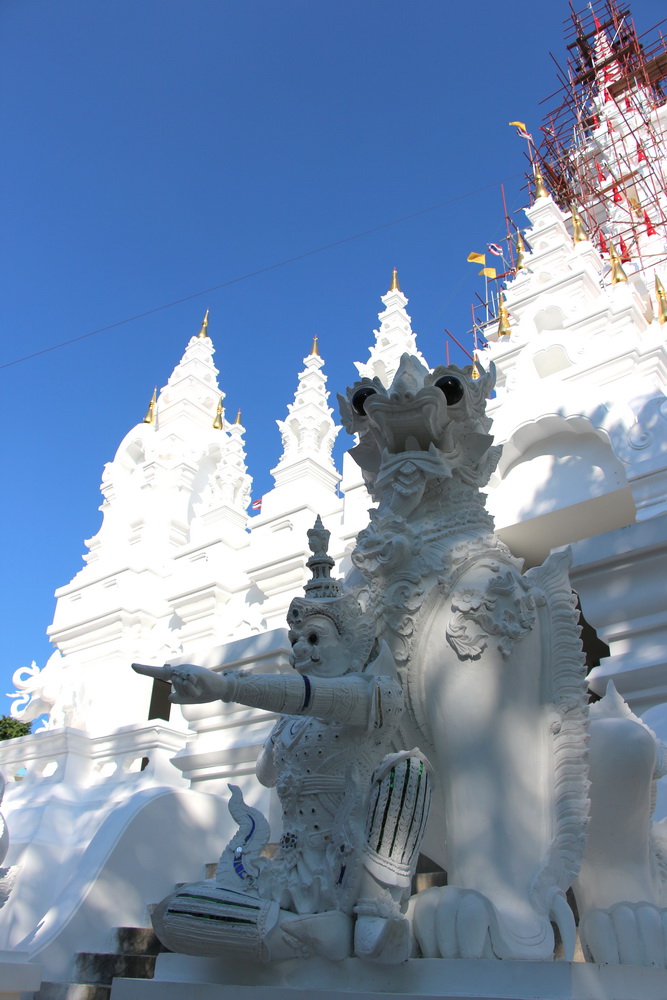
and Third Loha Prasat? built at Wat Ratchanatdaram. Bangkok, Thailand,
during the reign of King Nang Klao, King Rama III, this temple was built
to be given to His Royal Highness the granddaughter of His Royal
Highness Prince Sommanat Watthanawadi. As for the castles metal, His
Majesty ordered the designers to design it in 1846, the year the
construction began. To be a Buddhist place to practice Dharma and
propagate Buddhism of Rattanakosin. The building has 7 descending
floors. The 7th floor, the topmost part, is the top of Chaturamukh
Castle. Contains the relics of His Majesty the Lord Buddha. There are 37
castle peaks in total and were completely restored during the reign of
King Rama IX. It is considered the only metal castle in the world that
is still intact and elegantly enshrined until today.
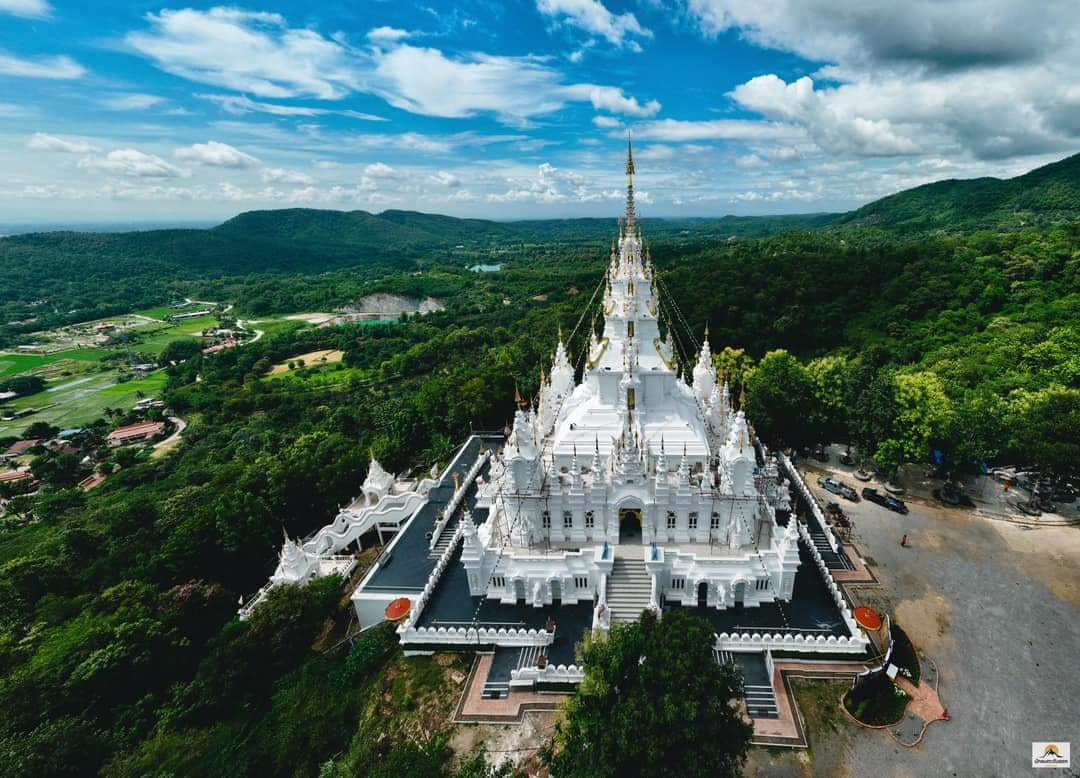
As for the Fourth Loha Prasat, construction is currently underway at
Wat Ban Pong. to cover the original pagoda which houses the sacred
relics of the Buddha that are more than a hundred years old. and 28
Buddhas are enshrined for the highest worship. Including being a place
to practice Dhamma and propagate Buddhism of the northern region. Using
design techniques from engineers who are knowledgeable and skilled in
Buddhist art. which has brought the pagoda and temple to be used
together seamlessly Because the ground floor will be an open hall. It
can hold no less than 300 Dhamma practitioners. The upper part looks
like a castle-shaped pagoda in the Lanna style. The base plan of the
castle is square with a courtyard surrounding it. The roof of the castle
is covered with gilded metal sheets, descending in 3 levels. The 3rd
level is the top of the castle which is covered with gold to hold the
relics of the Lord Buddha. Each floor has an arch on 4 sides, covered
with metal and gilded patterns, reducing in a tiered tier from the base
up to the top. The stucco work and decorations are based on applied
Lanna beliefs.
which when construction is completed it will be considered as ?The
worlds first Lanna-style metal castle? is considered a valuable
contemporary architectural work that will be passed down as a legacy of
the land of Thailand forever.
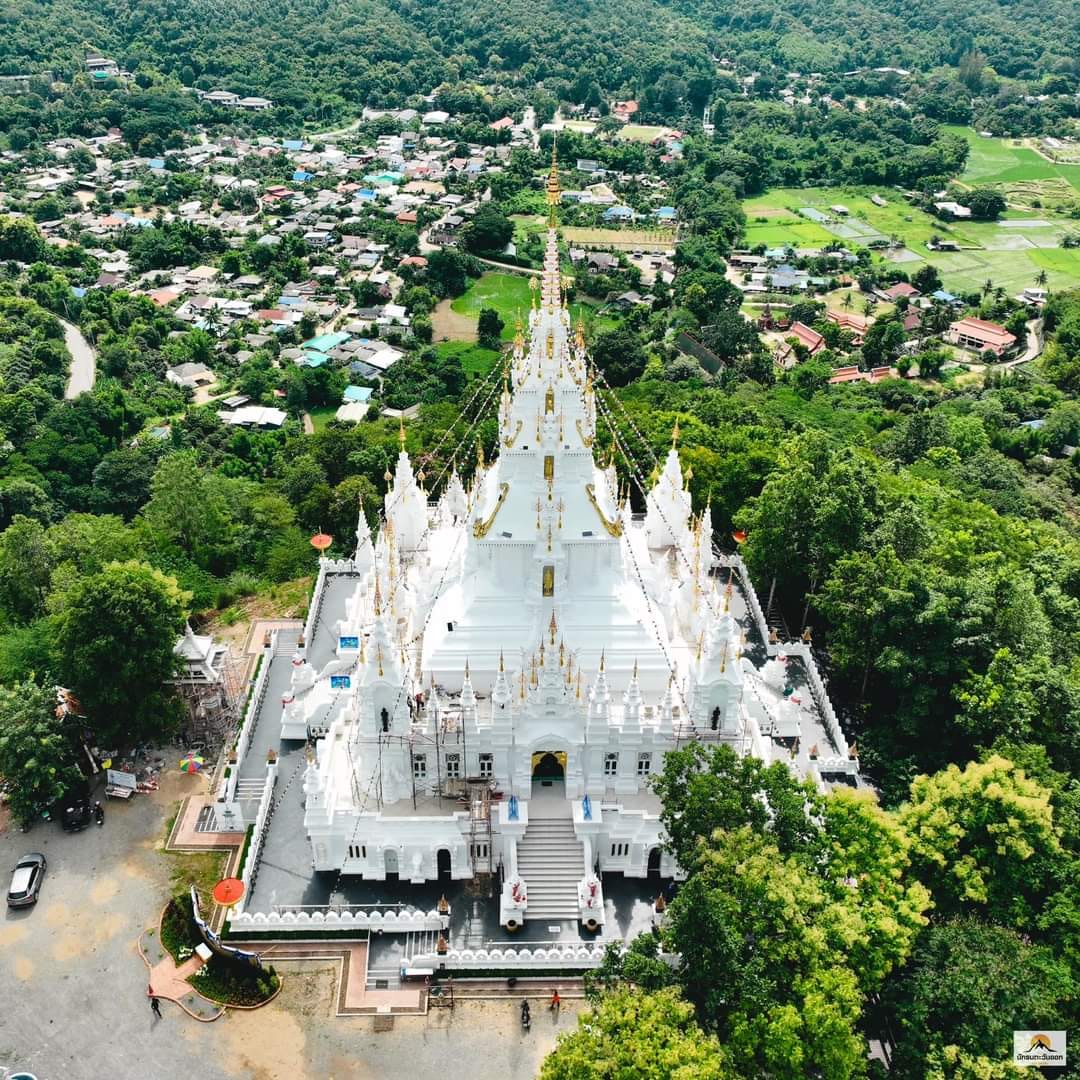 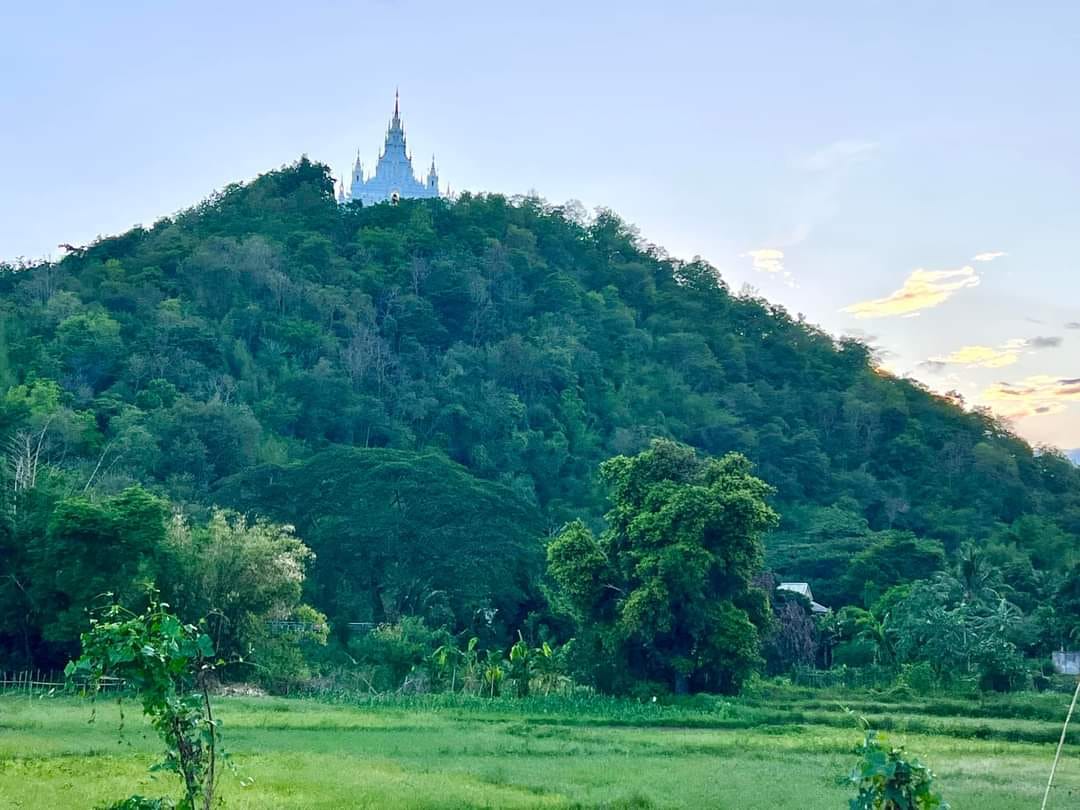 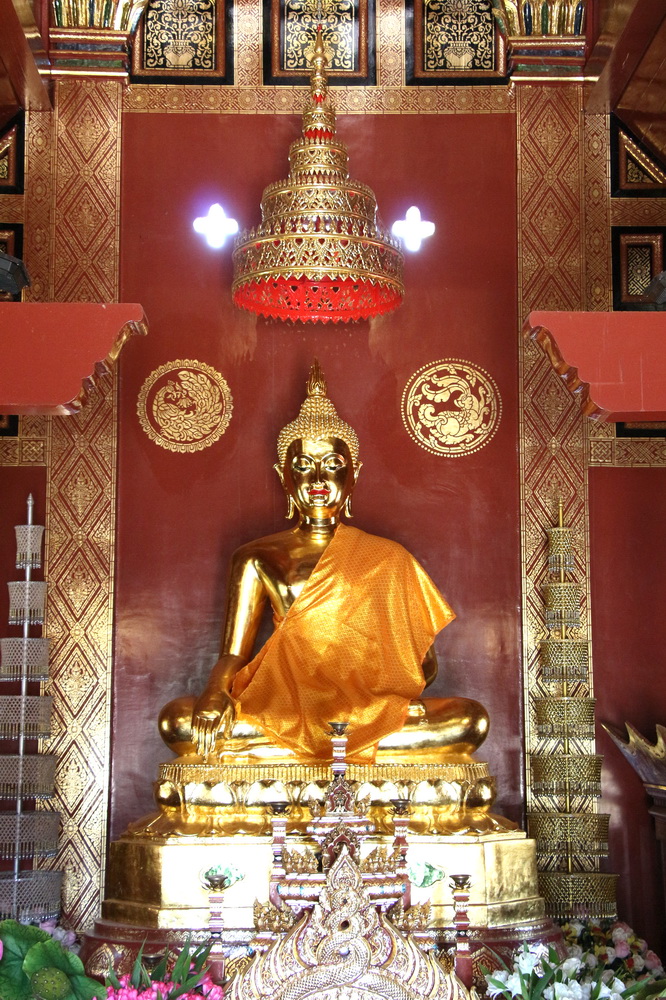 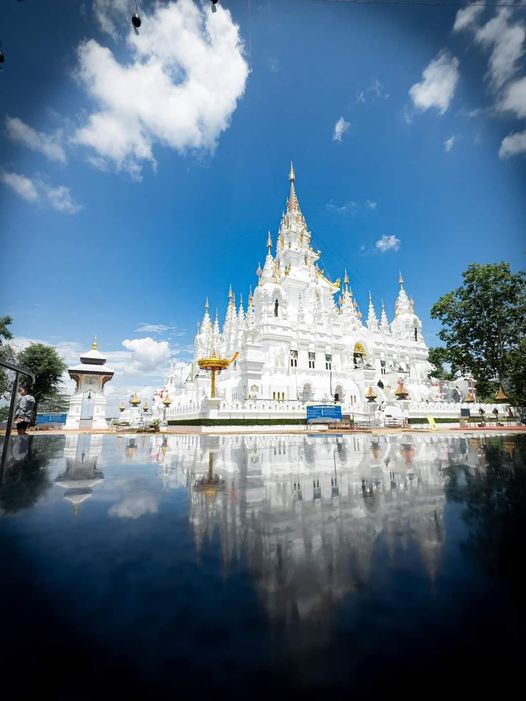
Tour Included
-
Hotel pick up and drop off within 5km radius of
Chiang Mai Old City
-
Travel accident insurance
-
Half day tour in a tuk tuk
-
English speaking guide
-
Entrance fees (90THB
-
Pickup details ? You can also get picked up from
your hotel in Chiang Mai town.
-
The exact pick-up time will be confirmed by email
after you have made the booking.
-
Please plan to meet your driver at your hotel lobby at
least 10 minutes prior to the sc Read more
|
Duration Private Tour |
Moring |
Aftenoon |
|
Price 1,500 baht per/person |
09.00-12.00 |
13.30-16 .00 |

|